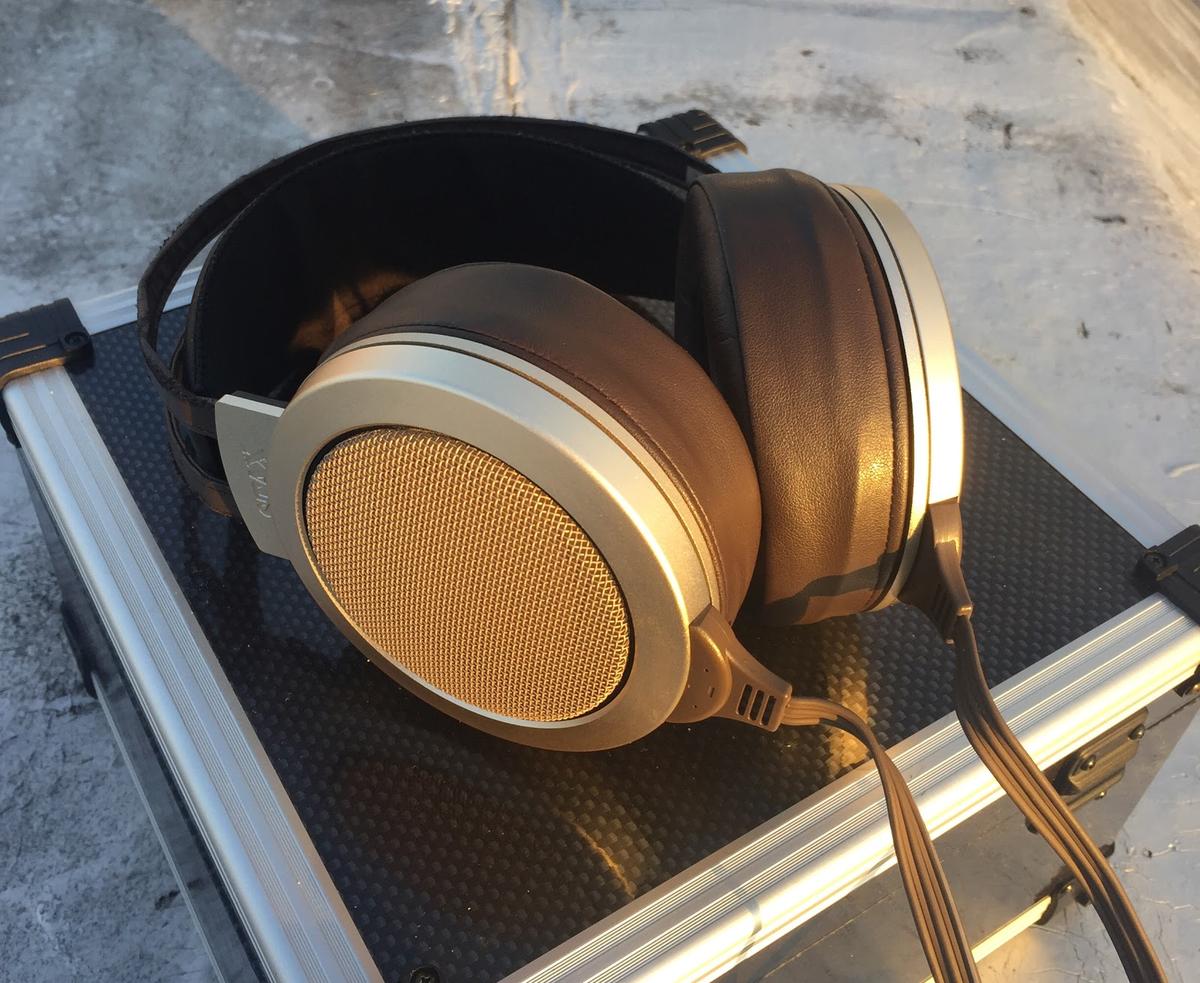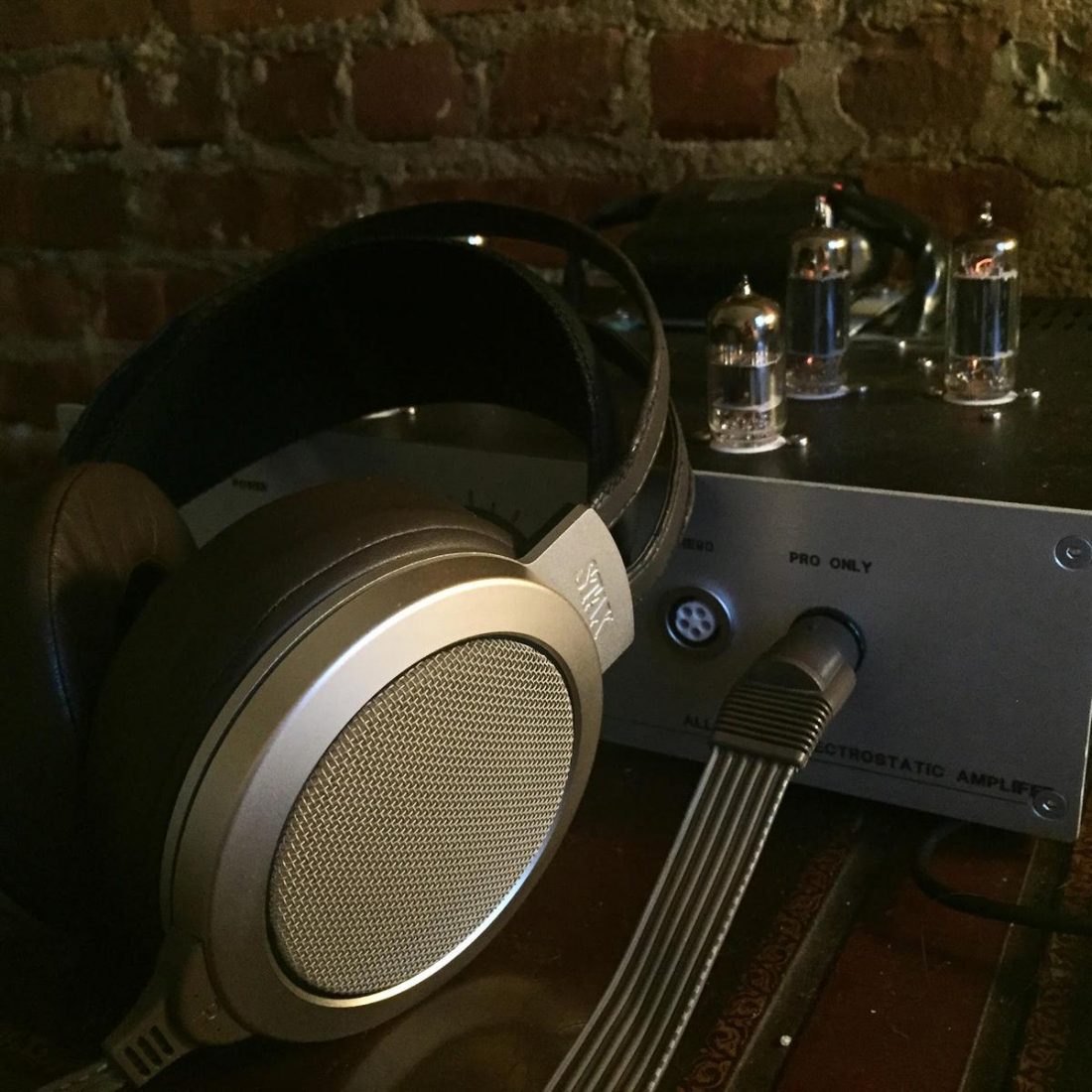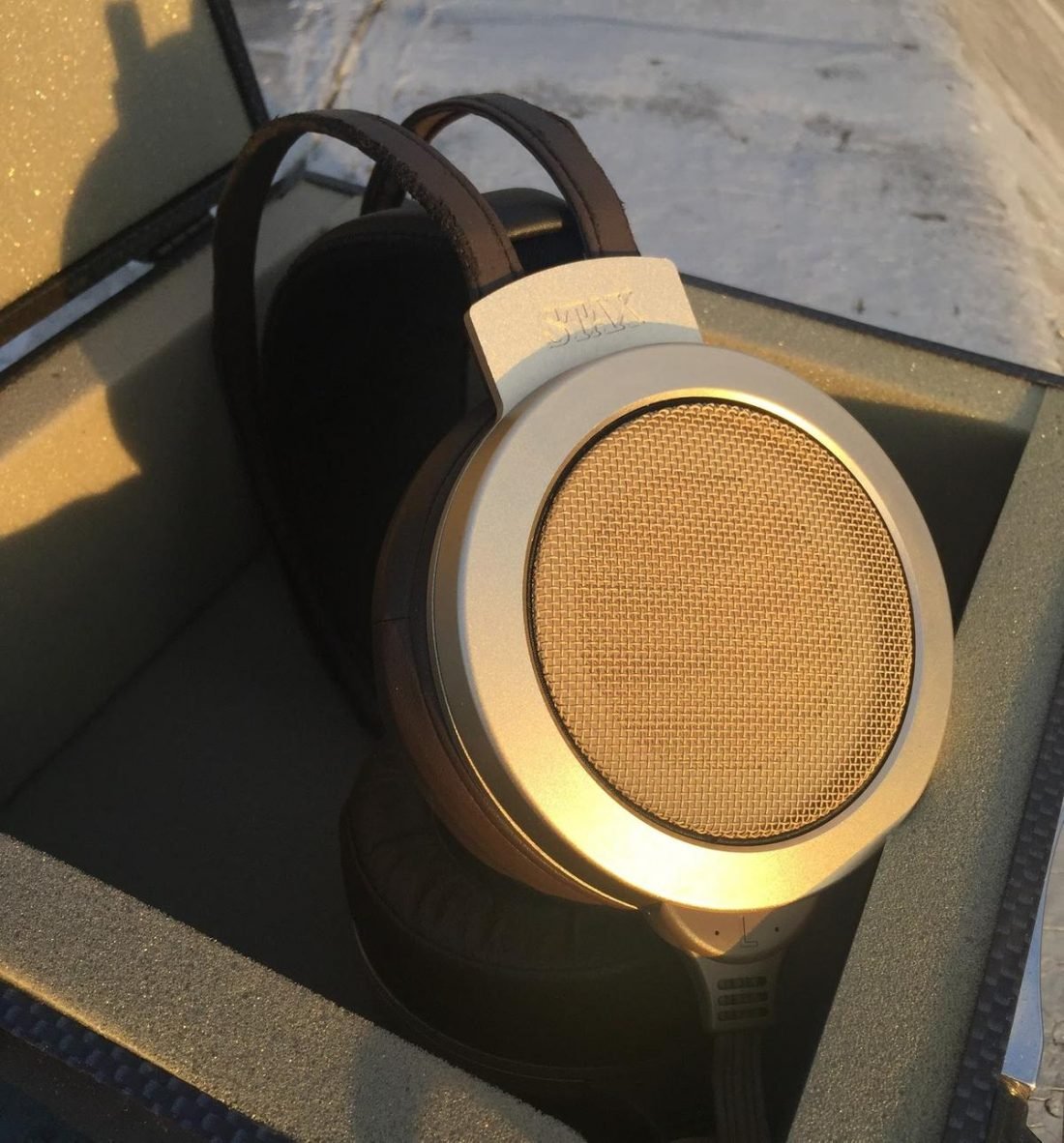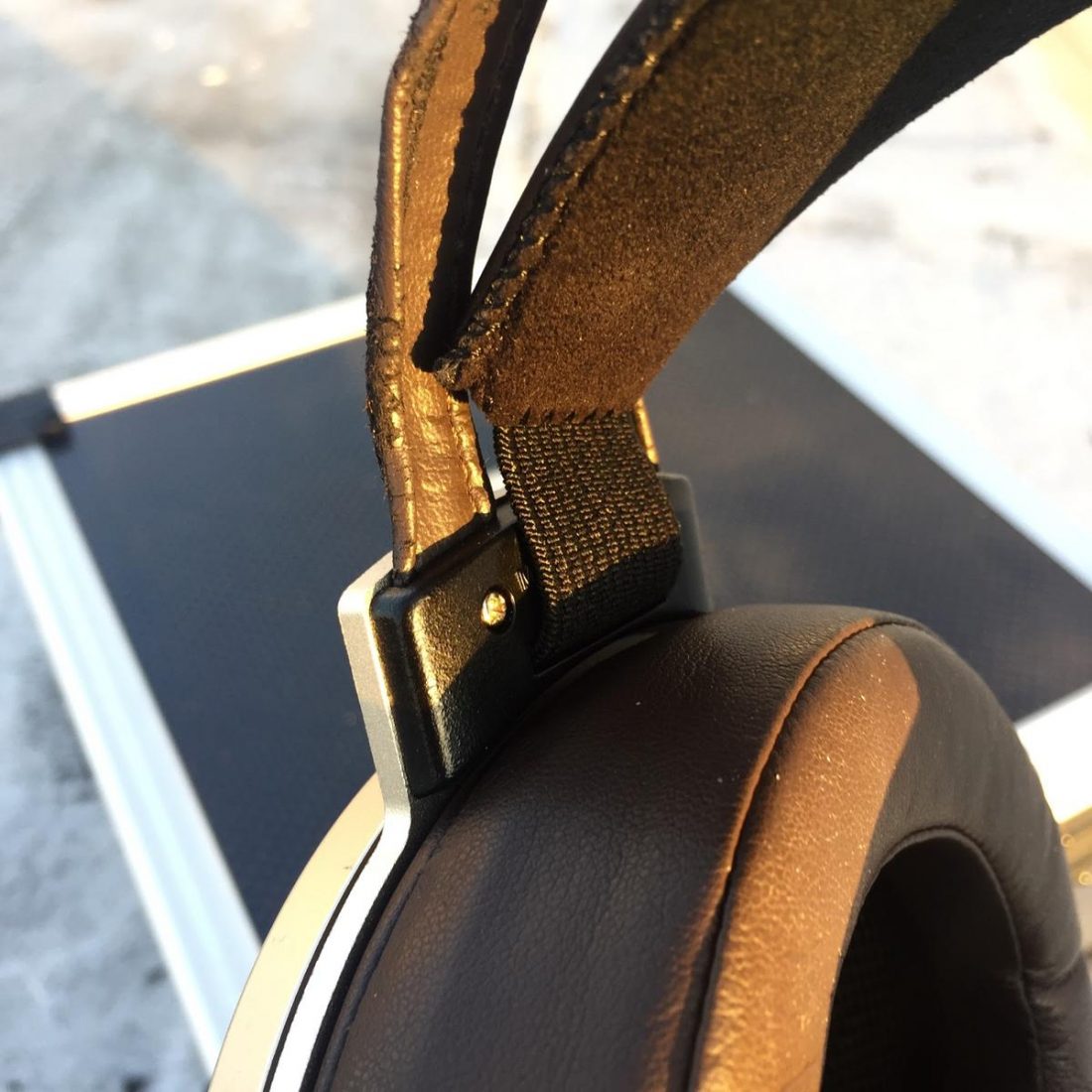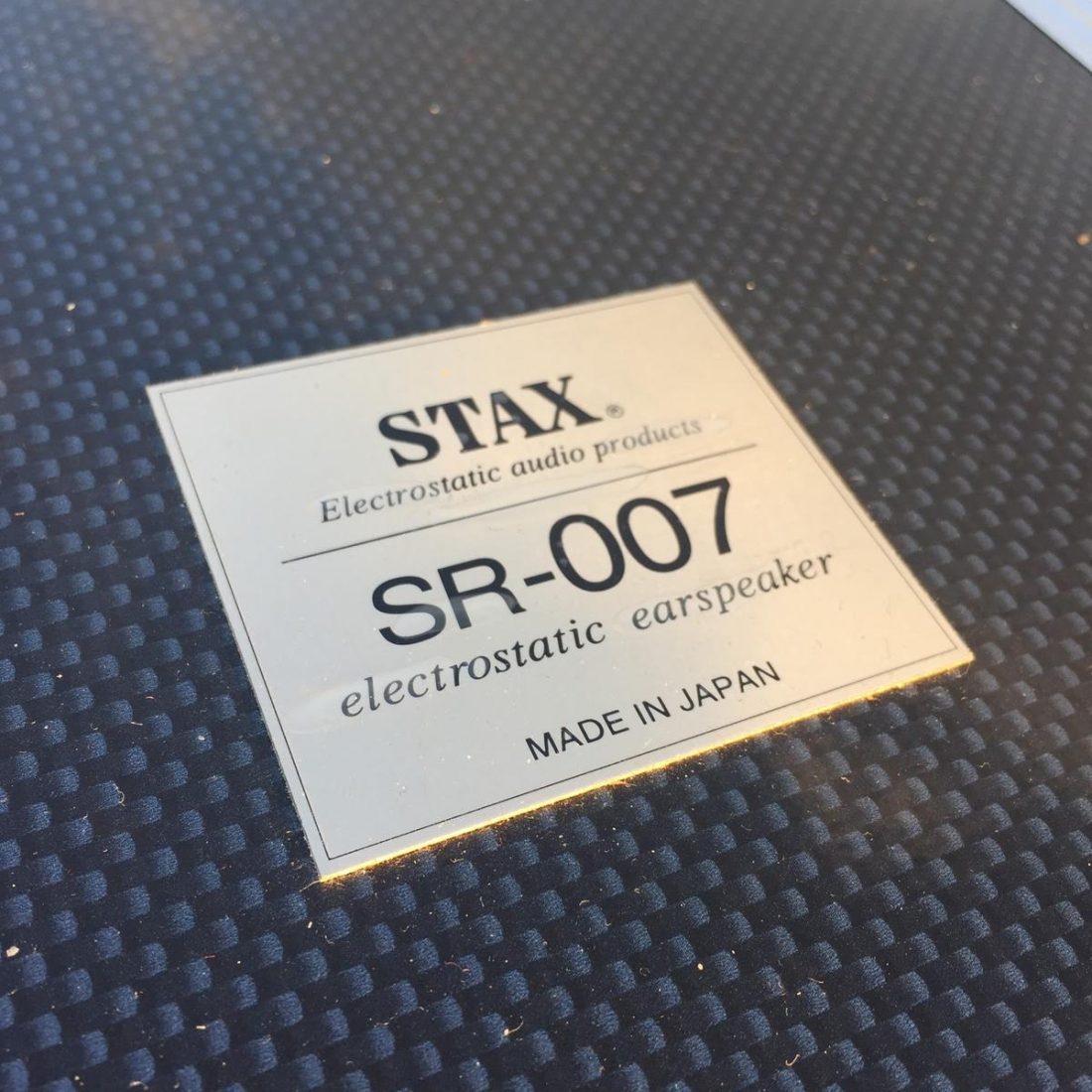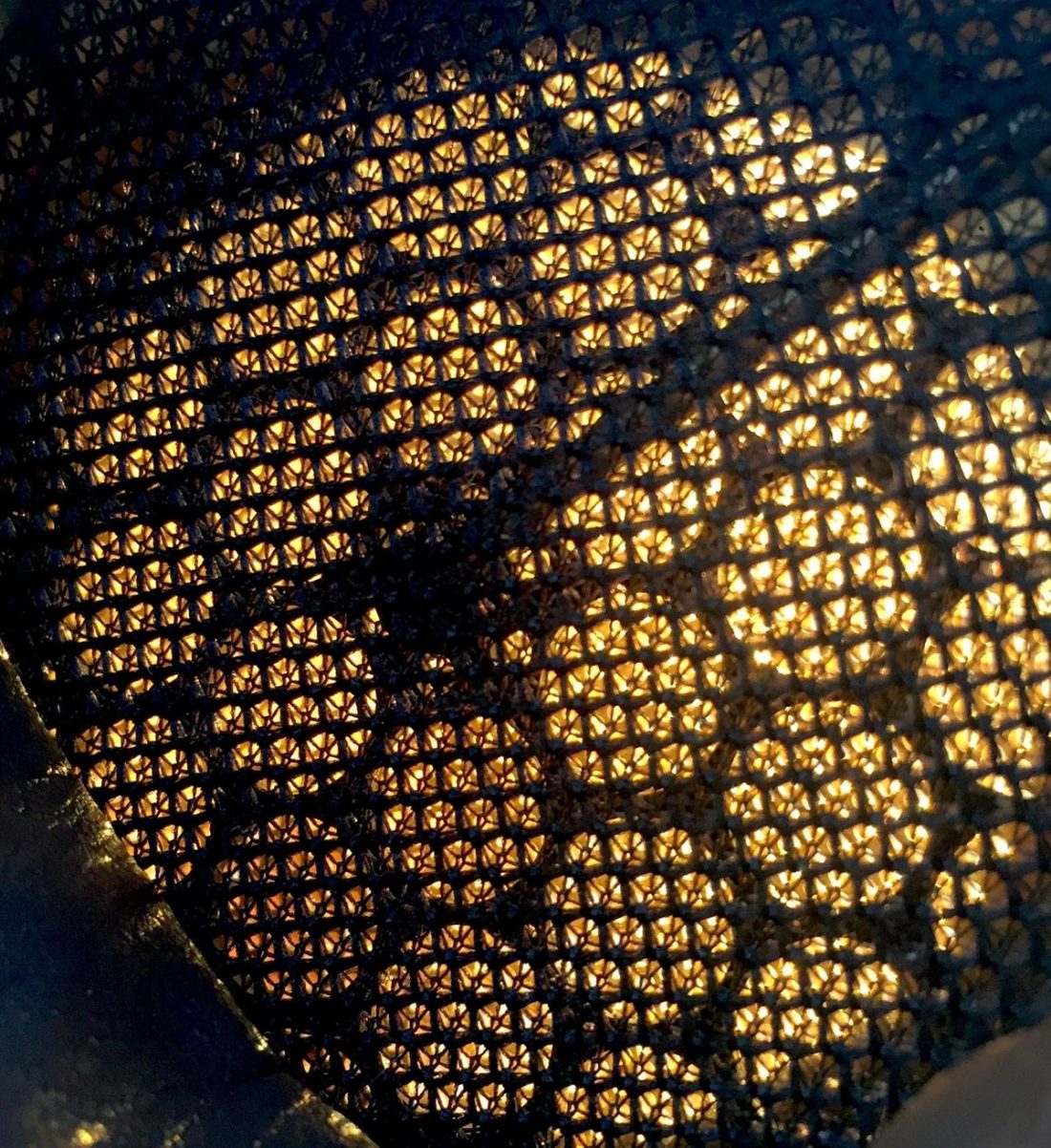What can I say about the Stax SR-007 that hasn’t already been said? It is, after all, one of the most legendary headphones of all time. And not a few people proclaim it the single greatest headphone ever created, even outranking products costing tens of thousands of dollars – the Sennheiser Orpheus, the original Stax Omega. And who am I but a lowly headphone reviewer? I’ve certainly tried my fair share of headphones, but do I have what it takes to pass judgment on this behemoth of the headphone world? Before I take a stab at that question, I ought to take a few steps back. The SR-007 MK1 is a headphone by Japanese electrostatic headphone manufacturer Stax. By “electrostatic,” what we mean is that it uses electric forces, rather than magnets, to move an extremely thin, constantly-charged membrane. This was nothing new at the time the SR-007 was created. The SR-007 itself was a follow-up to the also legendary but horrendously unsuccessful Stax Omega – which was so expensive to build that it actually drove the company out of business temporarily. Luckily, the SR-007 righted many of the errors that caused the Omega to be such a disaster, and it’s still manufactured today (although the currently manufactured version is slightly different from the original). These days, if you’re to get an SR-007, you’ll be getting the SR-007 MK2. What I have, on the other hand, is the original MK1, which goes for about USD$1200-USD$1500, if in good condition. I still haven’t tried the modern version, but I’ve heard that aside from a few differences, it’s pretty similar.
Technical Specifications
Those new to electrostatic headphones may note that the numbers here look quite different from the numbers for a typical dynamic or planar-magnetic headphone. Yes, these do have an extremely high impedance, as is typical for electrostatic headphones. More on the significance of this in a second…
Impedance (@ 10kHz): 170 kOhms Sensitivity (@ 1kHz): 100 dB / 100 V.r.m.s. Bias voltage: 580 V Weight: 365 g (without cale) Frequency range: 6 – 41,000 Hz
Amplification requirements
In order to properly drive an electrostatic headphone, it takes a special kind of amplifier – ordinary headphone amps are categorically unable to power these, because they demand a constant bias voltage that applies to the membranes, in addition to the usual signals provided by an amp. In addition, they all have extremely high impedance (in excess of 100,000 Ohms, where an ordinary headphone will never go much higher than 600). Of this class of difficult-to-power headphones, the SR-007 may well be the single most difficult to power. I myself own a relatively cheap (~USD$300-$400) Stax SRM-1/MK-2 (now out-of-production, but roughly equivalent to the modern SRM-353x), which is able to power the SR-007. But comparing that amp to my friend’s much more powerful (and much more expensive) Mjolnir Audio Baldur amplifier (a one-off amp based on the circuit design for Sennheiser’s Aristaeus, the companion amp for the Orpheus), the difference was manifestly obvious. The SRM-1/MK-2 made the SR-007 sound compressed, and somehow simultaneously dull and harsh in the upper midrange. Meanwhile, the Baldur evened everything out, and I was given a much more realistic tone, with better separation, better detail retrieval, better dynamics, etc. You’ll have to take my word for it – the difference was not subtle, and I can buy that many people’s negative impressions of the 007 come from listening to it on an underpowered system. I won’t say that the SR-007 sounded outright bad on the SRM-1, and I had plenty of room left on the volume knob. But if you’re going to spend on the SR-007 without plans to eventually supply it with an appropriate amplifier, I’m going to say you’re wasting your money.
Build and Comfort
When it comes to their lower-priced models, especially their Lambda series, Stax enjoys a less-than-stellar reputation. Their cheaper headphones are mostly plastic, and sport a boxy design straight from the ‘70s that is, shall we say, an acquired taste. I actually enjoy it quite a bit, but it’s not for everyone. Thankfully, the SR-007 is not like that. These are quite well-built headphones by any standard, with precisely machined metal earcups, thick, plush leather earpads, good-looking metal grills, and smart, sensible styling overall. When it comes to comfort, though, the SR-007 is a bit of an oddball. That’s not to say it’s uncomfortable, but it’s a bit odd. First of all is the suspension headband – it uses elastic to stretch to the size and shape of a user’s head. This is nothing new – AKG has been doing it for longer – but on my head it tends to be just a little bit tight, bringing the headphones up to rest against the bottom of my ear (whereas I have the opposite problem with AKG’s, which tend to sink down). The earcups are more unique, employing an interesting rotating system. The earcups themselves are mounted to the headband arc assembly, and cannot move at all – no yoke, no nothing. However, the earpads rotate along with part of the earcup, meaning you have to rotate them until they seal against your head. It’s hard to describe, and it’s not the most intuitive design ever. The first time I tried these, I had no idea that’s how I worked, and I quickly gave up when I found I couldn’t get a seal. And a note with the seal: with electrostatic headphones, it’s extremely important to get a proper seal against your head. If you don’t, these headphones completely lose their control over the bass region, becoming a boomy, rolled-off mess. Overall, I’d give the SR-007 high marks on comfort, but I do prefer the more traditional design of the SR-009. Now, if only the SR-009 sounded like this too…
Sound
While Stax’s electrostatic headphones often amaze people with their technical ability and smooth, grain-free, vivid sound, they also have a reputation for sounding somewhat “off.” To some, they sound simply great. To others, though, they seem to lack impact and texture, or they sound plasticky and thin, or they have an “off timbre.” My go-to pair of headphones is a pair of original Stax Lambdas, and I like them quite a bit, but I can’t pretend I don’t hear what people are talking about. They do sound thin. To me, that’s mostly down to the frequency response, which introduces a kind of glassy shoutiness to the sound of many instruments and voices. This is largely where the SR-007 outshines almost all of its competition: frequency response and timbre. What makes the 007 unique is its damping system. Most electrostatic headphones have “stators” (the metal grid that carries the electrical charge that moves the diaphragm) that are perforated edge-to-edge with hundreds of tiny holes. The SR-007, by contrast, has an area around the perimeter of the stator that is not perforated. Without getting too far into specifics (because, well, I can’t), this solid area evens out the frequency response of the SR-007, fixing what many consider the bright, edgy, “plasticky” tone of most electrostats. Overall, the tonality of the SR-007 is quite warm and pleasant, a bit warmer than the Sennheiser HD600. Before I first tried these headphones, this was some cause for concern, as I find headphones that are too warm or dark off-putting as well – for example, the Audeze LCD-2 comes off as dull and lifeless to me, especially with acoustic and classical music. However, now that I’ve tried them, I can say that the SR-007 MK1’s frequency response is just about spot-on for me. They might look a tiny bit odd on a graph (the notch near 1k, for example), but they sound very natural and “right.” It’s not difficult for me to see why there are so many people who are so attracted to the sound of the SR-007.
Bass
Forget what you heard about electrostats being unable to do bass. The SR-007 MK1 can do bass, and it can do it with authority. Not only is it tight, well-extended, and flat (typical for an electrostat), but it also hits much harder than most other electrostats, sounding more like your typical planar bass (a good point of comparison would be, for example, the Hifiman Arya). On the other hand, the SR-007 is not quite as blood-pumping as some of the most slammy dynamic headphones, so if you’re a basshead, this might not get you all the way there. As I noted earlier, the SR-007’s bass is quite compromised when the seal is interrupted, becoming much boomier and less well-extended. As it happens, modern SR-007s have a “bass port” that causes some of the same boominess problems. Many modern SR-007 owners have turned to the widely popular “Blutak mod” (just shove some Blutak into that port!) to fix these issues. In any case, the original SR-007 MK1 has no bass port, so no modding is necessary here.
Midrange
The midrange is often where Stax headphones – and electrostats in general – run into trouble. Because of the extremely low mass of the diaphragm, it tends to carry a strong spike in frequency response at its resonant frequency – for Stax headphones, this is mostly between 1 and 2kHz. This is why you often see descriptions of the Lambda-series headphones as “shouty.” Like most electrostatic headphones, the SR-007 also carries a boost of a couple decibels at 1kHz, along with an odd notch that’s visible in FR graphs but only serves to take the edge off the 1kHz region in listening. However, the 1kHz boost is still audible, especially with instruments that play notes in that region – flutes, pianos, clarinets. Where the SR-007 distinguishes itself from other electrostats is its midrange character: it is very full and intimate, with voices (both male and female) rendered wonderfully, and instruments rendered with a delicate warmth that is just exquisite – never too forward, but never diffuse or hollow-sounding. The upper midrange is dipped by some 5dB or so, starting at around 2kHz. This contributes to the warm sound of the headphone, but some might find that this coloration robs the headphone of some “immediacy,” “bite,” or “attack.” However, while I tend to find headphones like the LCD-2 dull and lifeless, I never found this was the case with the SR-007. The dipped upper midrange may take away a sense of forward aggression, but the SR-007 still sounds very realistic, especially with acoustic music – more than almost all other headphones I’ve heard. Still, the midrange isn’t perfect. The 1kHz boost combined with the dipped upper mids can, for example, cause clarinets and flutes to take on an uncomfortable, boxy quality; and the warmth and intimacy of the headphones can cause orchestral music to sound a bit cramped. I consider the SR-007 a truly amazing headphone, but realistically, not all listeners will necessarily see it that way. For what it’s worth, the current version of the SR-007 MK2 is said to have a few more dB of upper midrange, bringing it slightly closer to neutrality – though I’ve never heard one, so I can’t necessarily confirm that. Another option for those who want more upper midrange is the ES Lab ES-1a, which sits somewhere between the SR-007 and SR-009 in tuning.
Treble
The SR-007’s lower treble is slightly withdrawn, along with the upper mids, contributing to the headphone’s overall warm sound signature. It’s not absent – there is no missing information and no “hole” in the sound of the headphone. All the information is rendered beautifully, it just has a slightly warm tilt. All that changes when we cross the ~10kHz barrier. The frequency band above 10kHz is commonly referred to as the “air” frequency band – and the SR-007 considerably emphasizes these frequencies. Depending on the recording, this can be a bane or a boon. For acoustic recordings, this can lend a sense of realism or space to the recording, as we hear every scrape of bows and fingers against strings, every breath and lip-smack of singers and woodwind players. For modern recordings that already emphasize these frequency bands, the emphasized air region can be extremely unpleasant. For this reason, I would give the SR-007 the label “uncompromising,” despite its overall pleasant sound. When recordings have a large emphasis at 10kHz (see the Kate Bush album The Sensual World for an example), you really hear that emphasis, and it can be quite unpleasant. Overall, the SR-007’s treble is quite smooth and resolving, especially when compared to dynamic and planar-magnetic headphones. But it’s revealing of bad mastering, bad recording, and (also important!) bad sources. If these headphones sound grainy – it’s probably not the headphones doing it.
Soundstage and imaging
The Stax SR-007’s soundstage is one of its most hotly-debated properties. I perceive the soundstage as small-ish, intimate, and finite in character, like a little room that extends just beyond my head. Some people find this character quite appealing, while others take issue with it. The SR-007’s detractors accuse it of being “unable to throw a proper soundstage,” while its proponents describe its soundstage as proper, and simply not “unnaturally diffuse.” I do like a headphone with a nice wide soundstage, and for me, the SR-007’s soundstage is a bit smaller than I’d like, but frankly, it’s only a small criticism for me – the sound is so nice otherwise that I couldn’t be bothered to care. The imaging, on the other hand, is very, very good – some of the best I’ve heard from a headphone. Hardly ever in my life have I heard such precision in the center image. The flanks of the image are also very cohesive, with no holes or areas of imprecision. The image overall takes the shape of a narrow arc right along your face. In fact, the imaging can be almost unnervingly pinpoint. Gone are the big, viscerally satisfying washes of sound that one gets from headphones like the HD600. In fact, the imaging is another reason I would call the SR-007 an “unforgiving” headphone. Little mixing errors are highlighted. For example, if recordings multiple mic positions are improperly blended, the resulting imprecision in the imaging becomes manifestly obvious. WIth most headphones, the imaging is vague or diffuse enough to hide such errors, but with the SR-007, there is nowhere to run.
In Conclusion
I’m not the type of reviewer to keep a running tally of my favorite headphones, but I’ll say this much: the SR-007 is probably the best headphone I’ve ever heard. Although I’m partial to huge-sounding, diffuse headphones like the HD800, the SR-007 is so smooth, so precise, so effortless, and so “right-sounding.” Of course, I have my own preferences. I don’t much care about things like slam and macrodynamics, both of which the SR-007 is somewhat lacking. They really do sound a bit too “airy,” or “gentle,” or whatever adjectives you might want to associate with electrostatic headphones. However, because the lower midrange has appropriate weight, these issues aren’t quite as bothersome as they are on most other Staxen (SR-009 included). The treble is also slightly uneven for me. I’ve heard, though, that this issue has been fixed, or at least diminished, in the most recent revision of the SR-007 MK2. And don’t get me wrong – the treble will come off as very smooth compared to even the highest-end dynamic and planar-magnetic offerings, I could just do with a dB or two less air. Overall, the SR-007 MK1 is a great headphone, and even – dare I say it? – a good value, considering what it brings to the table. In other words, there are USD$5000 headphones that don’t sound as good as the USD$1500 SR-007 MK1. Just don’t shortchange it with the rest of your system – it takes a very capable amplifier to make these worth the money.
